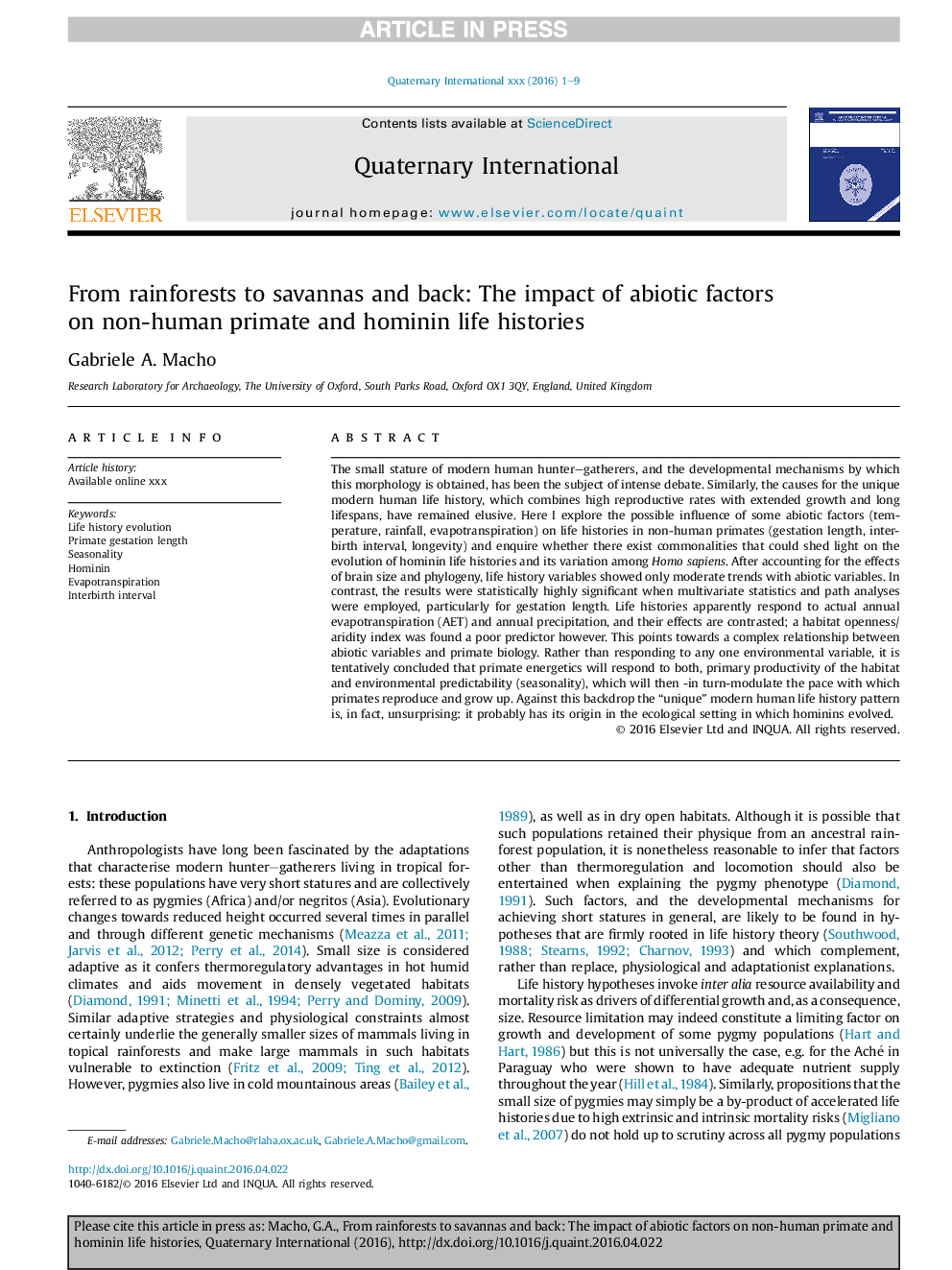| Article ID | Journal | Published Year | Pages | File Type |
|---|---|---|---|---|
| 5113029 | Quaternary International | 2017 | 9 Pages |
Abstract
The small stature of modern human hunter-gatherers, and the developmental mechanisms by which this morphology is obtained, has been the subject of intense debate. Similarly, the causes for the unique modern human life history, which combines high reproductive rates with extended growth and long lifespans, have remained elusive. Here I explore the possible influence of some abiotic factors (temperature, rainfall, evapotranspiration) on life histories in non-human primates (gestation length, interbirth interval, longevity) and enquire whether there exist commonalities that could shed light on the evolution of hominin life histories and its variation among Homo sapiens. After accounting for the effects of brain size and phylogeny, life history variables showed only moderate trends with abiotic variables. In contrast, the results were statistically highly significant when multivariate statistics and path analyses were employed, particularly for gestation length. Life histories apparently respond to actual annual evapotranspiration (AET) and annual precipitation, and their effects are contrasted; a habitat openness/aridity index was found a poor predictor however. This points towards a complex relationship between abiotic variables and primate biology. Rather than responding to any one environmental variable, it is tentatively concluded that primate energetics will respond to both, primary productivity of the habitat and environmental predictability (seasonality), which will then -in turn-modulate the pace with which primates reproduce and grow up. Against this backdrop the “unique” modern human life history pattern is, in fact, unsurprising: it probably has its origin in the ecological setting in which hominins evolved.
Related Topics
Physical Sciences and Engineering
Earth and Planetary Sciences
Geology
Authors
Gabriele A. Macho,
